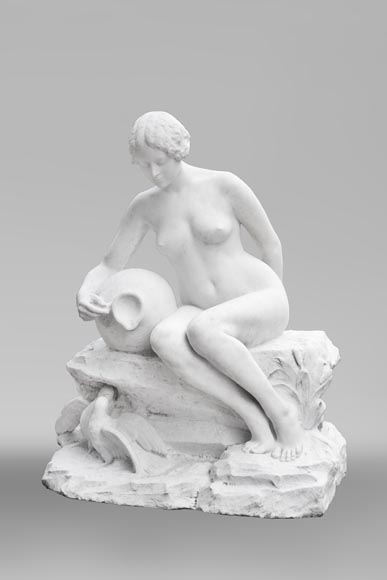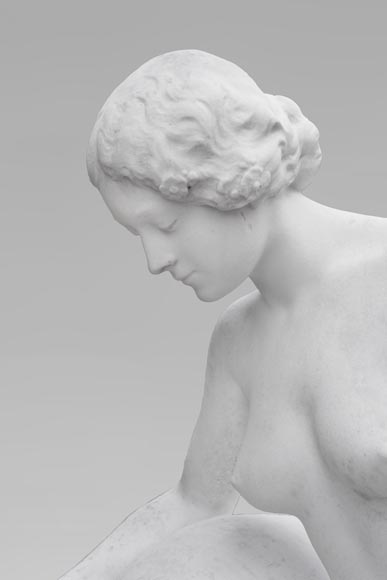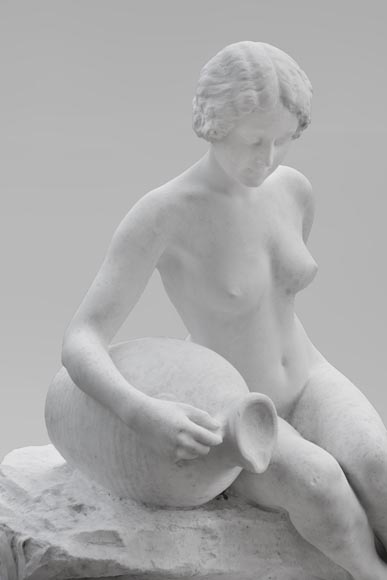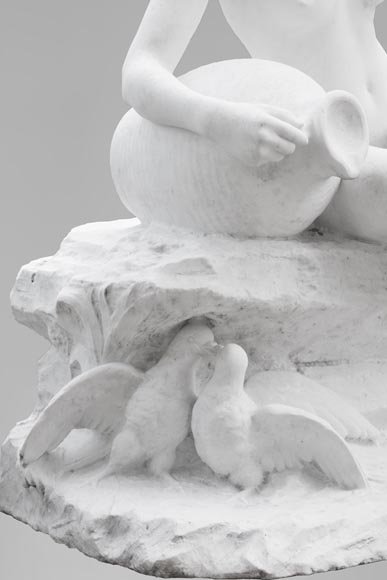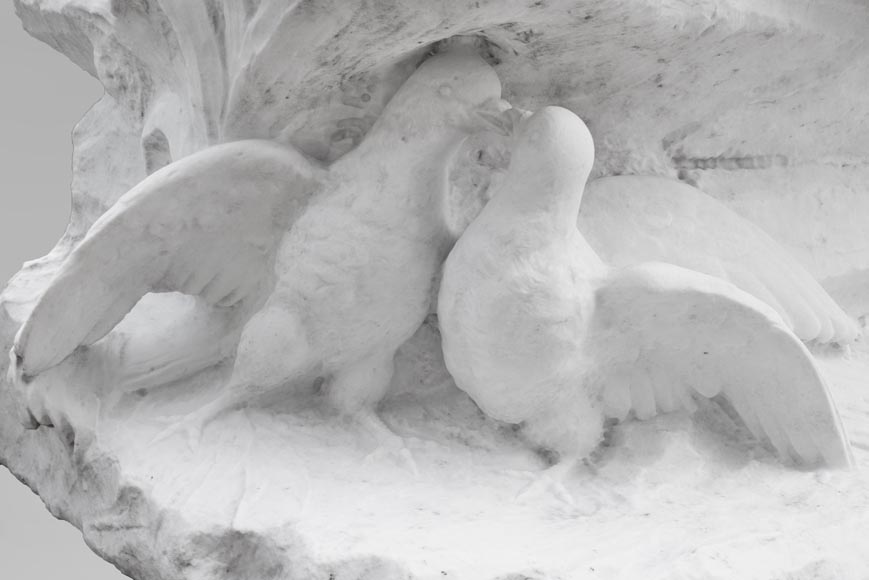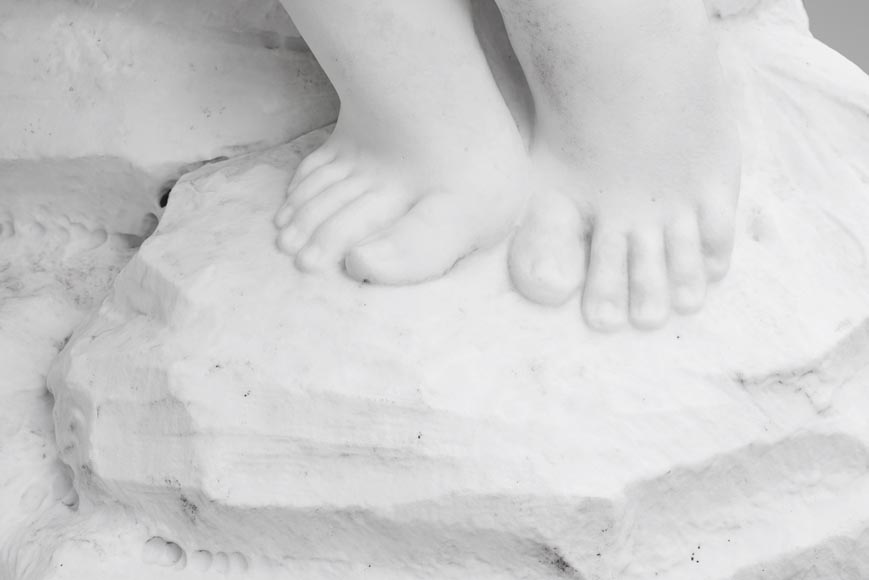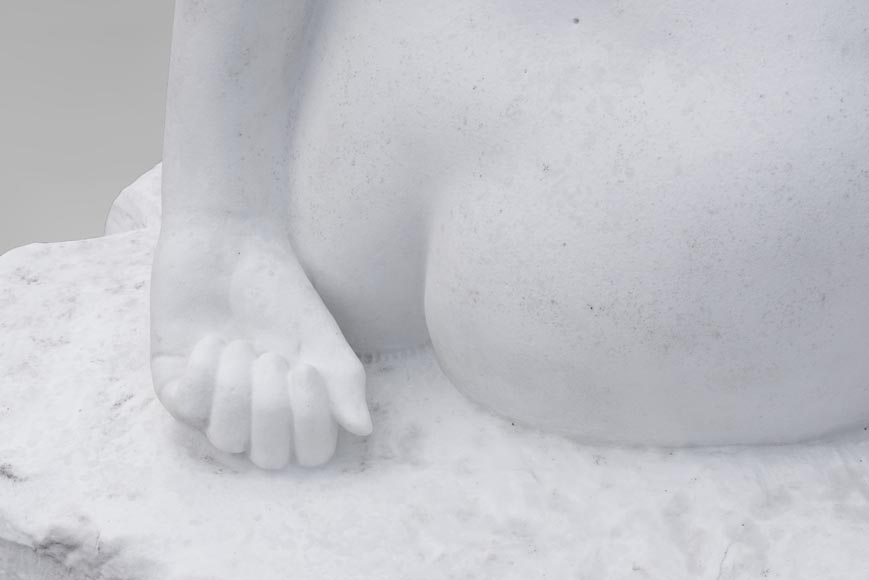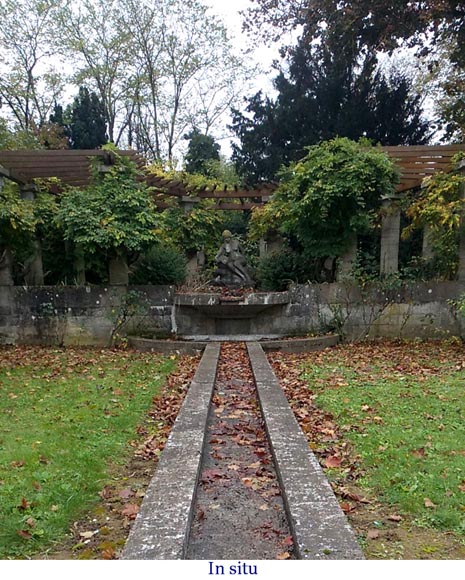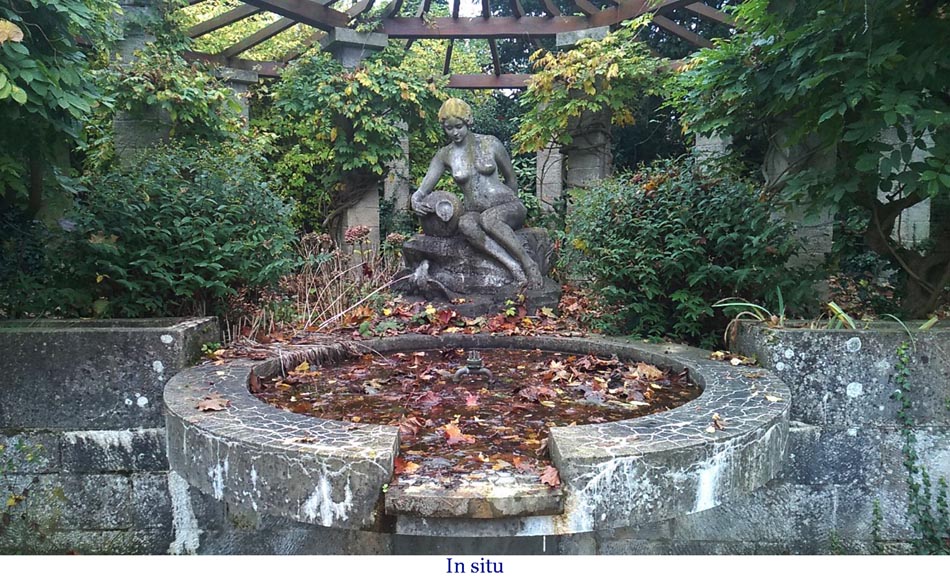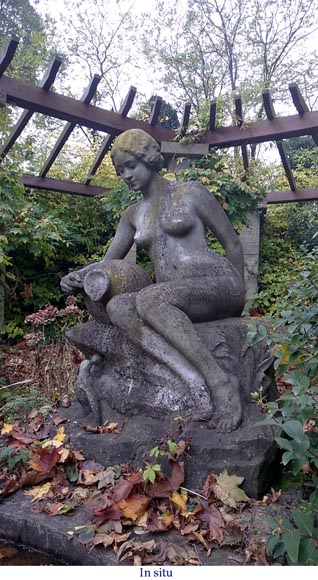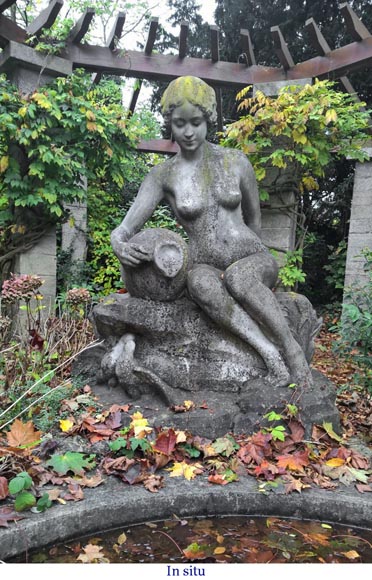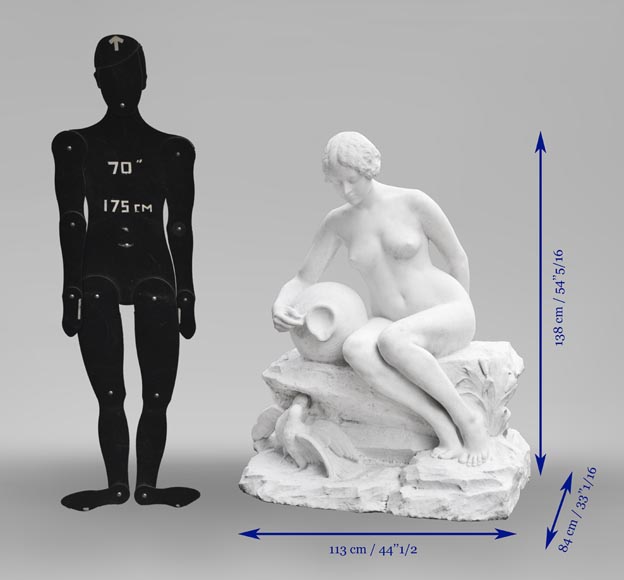Style Art Nouveau / Ref.10900
Achille FIDI, "The Source", an important garden statue in white marble
Dimensions
Width 43'' ¼ 110cm
Height 54'' 137cm
Depth: 32'' ¼ 82cm
Origin:
Circa 1910, France. Signature.
Status:
In perfect condition.
This beautiful statue represents a young woman, allegory of the Source, holding an jug in her right hand. She is naked and sat on a rock, her eyes lowered towards the container she’s tilting and from which water could be flowing. Her position, knees and feet together, is both chaste and sensual. A great sweetness emerges from her fine-featured face surrounded by curly hair, gathered in an elegant bun. Beside his feet, reeds evoke the aquatic world, an attribute - like the jug or the shell - associated with the allegory of the Source, personified by a young woman. It is indeed a naiad, nymph of springs, fountains and lakes from Greek mythology. Two doves, sheltered in a hollow formed by the stone, embrace each other.
Nature personification - and especially of elements related to water - is very common in Greco-Roman mythology representations. The publication in 1593 of Cesare Ripa's Iconologia, translated in French by Jean Baudouin in 1637, has been a source and a reference for artists who often chose to express themselves through allegories. It was then a question of creating a codification, a universal language that can be found in the most diverse genres, whether in painting or sculpture. One of the most famous representations of the Source in the 19th century is the painting sketched by Jean-Auguste-Dominique Ingres around 1820 and completed in 1856. The naiad is represented with the same attributes as those present on our sculpture: the jug and an aquatic plant right next to his feet. The model’s pose as well as the painting composition lead the critics to compare it to a marble statue, a comparison that makes perfect sense with regard to the importance of antique statuary for the Neoclassical movement of which Ingres is the leader. This taste for Antiquity is also perceptible in a work that can be quite close to ours: La Source by Laure Coutan-Montorgueuil, a marble sculpture now kept in Bourges, at the Musée du Berry. A plaster edition was exhibited at the Salon of 1891 and deposited at the Museum of Douai. The model’s pose recalls that of our statue, the young woman sitting on a rock, leaning on one hand, the elbow slightly bent and face down.
Our sculpture bears the signature "A. Fidi". Achille Fidi was a sculptor of Italian origin living in Asnieres, near Paris. Many of the documents of the period mentioning this sculptor relate to an episode which made him infamous: the case of the "false Rodin sculptures" in 1919. Achille Fidi - mentioned as being a "talented sculptor" aged 58 at the moment of the facts - was indeed involved, arrested and then charged with "counterfeiting and forgeries in artistic matters" and "affixing false name or false signature on works of art" as well as for fraud. The Minister of Fine Arts had warned the curator of the Rodin Museum, Mr. Benedite, that doubtful reproductions were in circulation in Paris at that time. It was learned that Jacques Bouyon de Chalus - known as Count de Chalus - husband of the widow of the oculist doctor who was Rodin’s friend, thus justified the provenance of the bronzes he sold. However, a search at the Count's house revealed twenty-four new subjects, all signed. He was arrested and denounced Achille Fidi who, for his part, declared that the bronzes came from the workshops of the brothers Montagutelli, two art founders. The fake masterpieces had to be of great quality because they were sold to merchants and knowledgeable amateurs such as Bernheim, Grumbach and Pecquement. The Count de Chalus, Achille Fidi and one of the two brothers Montagutelli then shared the money. In his defense, Achille Fidi mentioned his five young children, explaining that misery threatened his family. Several other persons were charged with forgery, art conterfeiting and affixing a false name or false signature on works of art. This was particularly the case of Paul Gallimard, famous collector and bibliophile whose son founded the publishing house of the same name, who was also convicted in this case. The case was widely relayed by the press, especially because it involved Amelie Diéterle, mistress of Paul Gallimard, famous actress who was the muse of many writers and artists such as Stéphane Mallarmé, Renoir or Henri de Toulouse-Lautrec.
Informations
Price: on request
Recommended for you :
Dimensions:
Width: 86
Height: 194
Depth: 44
Diameter: 44
Dimensions:
Width: 149
Height: 82
Depth: 48
Dimensions:
Width: 26
Height: 77
Depth: 38
Dimensions:
Width: 53
Height: 149
Depth: 52
Dimensions:
Width: 66
Height: 159
Depth: 64
Dimensions:
Width: 57
Height: 134
Depth: 84
Dimensions:
Height: 128
Depth: 79
Diameter: 55
Dimensions:
Width: 186
Height: 226
Depth: 121
Dimensions:
Width: 64
Height: 274
Depth: 64
Dimensions:
Height: 117
Diameter: 135
Dimensions:
Width: 186
Height: 276
Depth: 121
Dimensions:
Width: 60
Height: 172
Depth: 57



